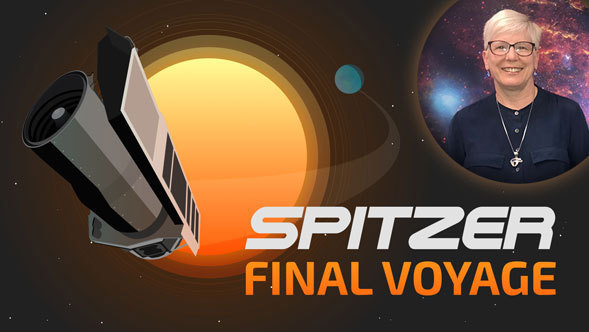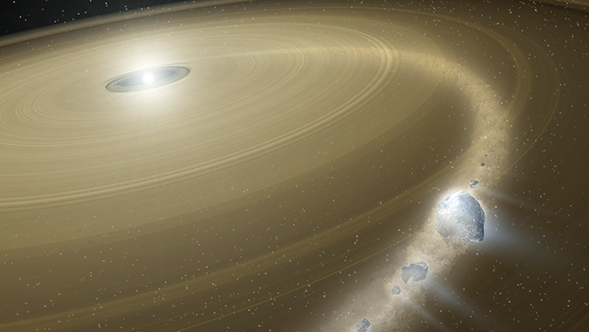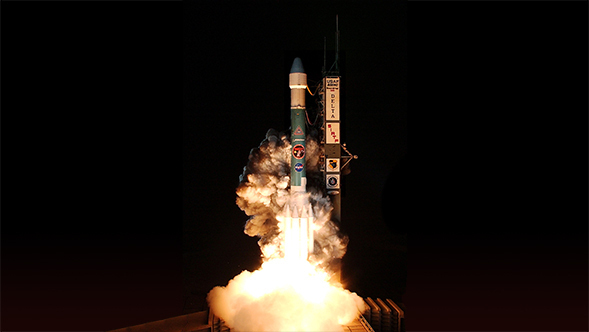
By Lisa Storrie-Lombardi | May 14th, 2019
On January 30, 2020, NASA’s Spitzer Space Telescope will transmit the final science and engineering data to mission control and then be commanded off, ending its amazing and surprising mission. But even after Spitzer ceases transmissions, scientists will continue making discoveries from its 16 years of data for decades to come. Spitzer enables groundbreaking advances in our understanding of planetary systems around other stars, the evolution of galaxies in the nearby and distant universe, the structure of our Milky Way galaxy, the infinite variety in the lives of stars, and the constituents of our Solar System. Along with other NASA missions, Spitzer has defined the landscape that will be explored and revealed in the future by NASA’s next infrared Great Observatory, the James Webb Space Telescope.
I’ve been part of the Spitzer mission since 1999, joining four years before the launch as the Science User Tools Scientist. Spitzer’s prime mission lasted more than twice the requirement, and I can assert with confidence that no one expected that the Observatory would still be operating and doing exciting science in 2019, the tenth year of the extended mission. I’m incredibly privileged to have spent almost my entire professional career with this mission. The people who operate the observatory are a family and we are surrounded by our cousins, the science community who have so creatively driven the science of the mission. When I started on this path I could not have imagined how rewarding this journey would be.
Please join us is celebrating Spitzer’s Final Voyage in the remaining months of the mission.
Follow the hashtag #spitzerfinalvoyage on Facebook and Twitter for updates.
Dr. Lisa Storrie-Lombardi
Project Manager, Spitzer Space Telescope

 Long Live Spitzer!
Long Live Spitzer!
 14 Years and 11 Months in Space... One More Month to Go Before #Spitzer15
14 Years and 11 Months in Space... One More Month to Go Before #Spitzer15



